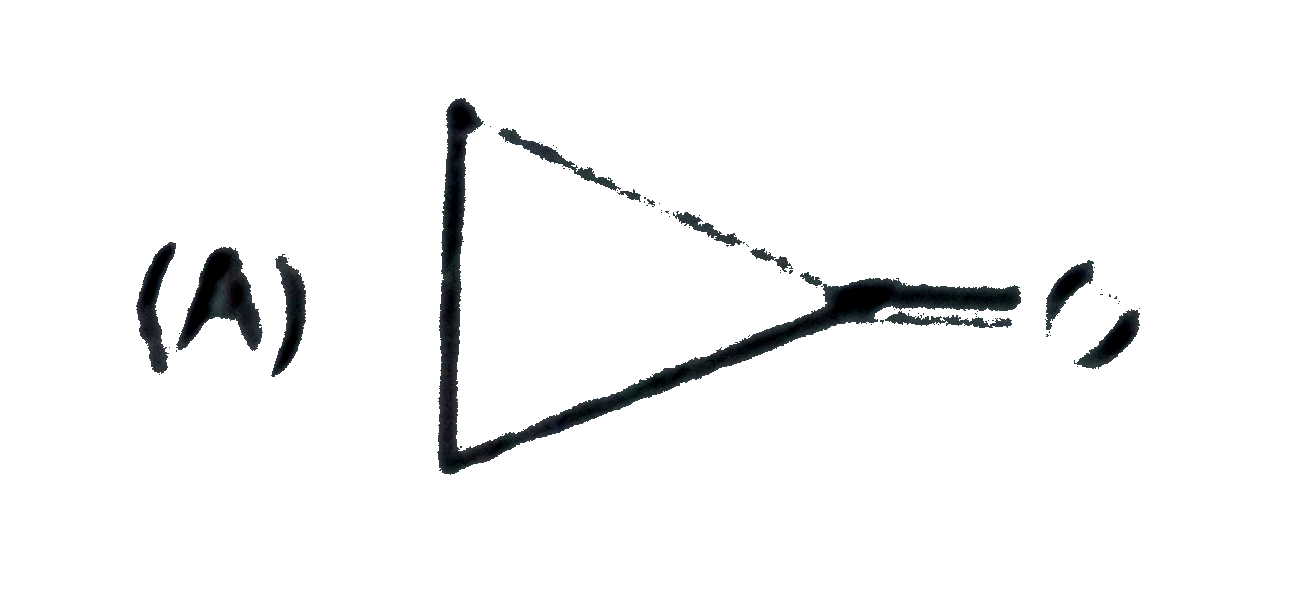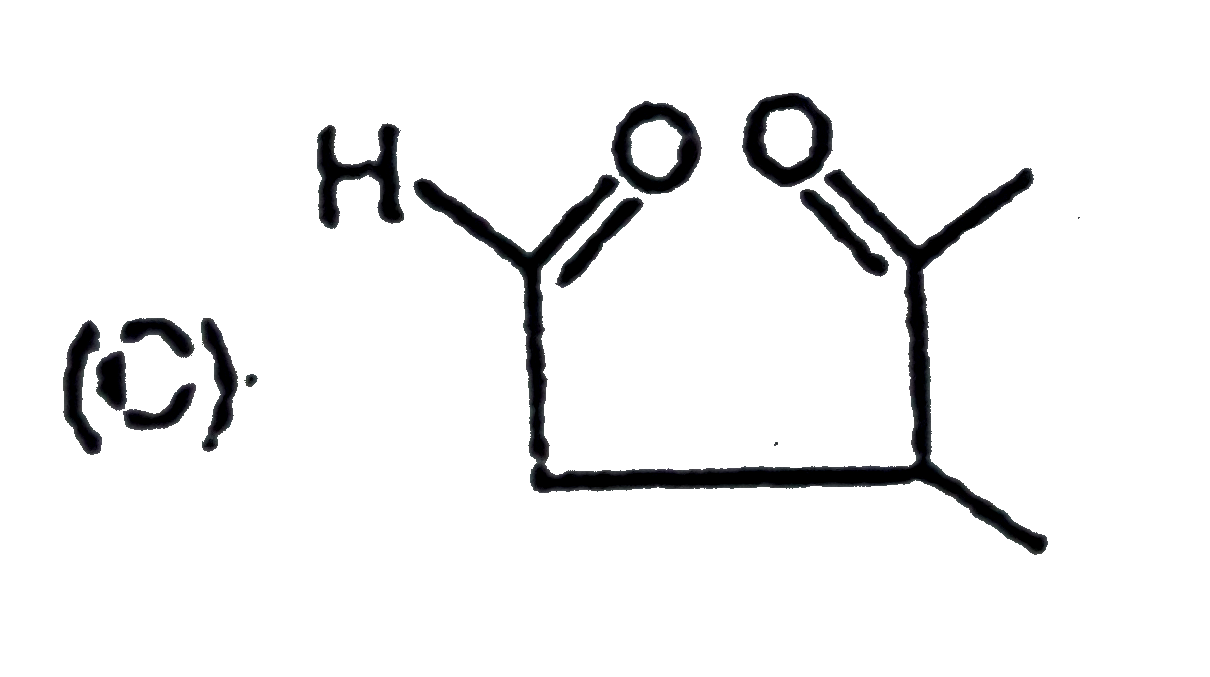Compounds P(C6H10) does not have any geometrical isomer.On ozonolysis, two products R(C3H4O) and Q(C3H6O) are formed.R gives negative iodoform test while Q responds positively towards I2/NaOH solution.S, another isomer of P is an unsymetrical alkene and on ozonolysis produces T(C6H107) which also gives a yellow precipitate with l2/NaOH solution and also positive test with Tollen's reagent Which of the following does not represent any of the molecules amongst P,Q,R,S & T.




The correct Answer is:B
To solve the problem, we need to analyze the given compounds and their properties step-by-step.
Step 1: Analyze Compound P (C₆H₁₀)
- Compound P does not have any geometrical isomers, which suggests it has a symmetrical structure.
- A possible structure for P could be 2,3-dimethyl-2-butene, which has no geometrical isomers.
Step 2: Ozonolysis of Compound P
- Upon ozonolysis, P yields two products: R (C₃H₄O) and Q (C₃H₆O).
- R gives a negative iodoform test, indicating it does not have a methyl ketone group (–C(=O)CH₃).
- Q gives a positive iodoform test, indicating it has a methyl ketone group.
Step 3: Identify Structures of R and Q
- Since R does not give a positive iodoform test, it could be an aldehyde or an alcohol. A possible structure for R is propanal (CH₃CH₂CHO).
- For Q, since it gives a positive iodoform test, it could be a methyl ketone. A possible structure for Q is 2-butanone (CH₃C(=O)CH₂CH₃).
Step 4: Analyze Compound S
- S is another isomer of P and is an unsymmetrical alkene.
- Upon ozonolysis, S produces T (C₆H₈O), which gives a yellow precipitate with I₂/NaOH (indicating a positive iodoform test) and a positive test with Tollens' reagent (indicating an aldehyde).
Step 5: Identify Structure of T
- Since T gives a yellow precipitate with I₂/NaOH, it must contain a methyl ketone group.
- A possible structure for T could be 3-hexanone, which can also yield an aldehyde upon ozonolysis.
Step 6: Evaluate Given Options
- We need to identify which of the given compounds does not correspond to any of the structures P, Q, R, S, or T.
- If we analyze the molecular formulas and the properties of the compounds, we can conclude that:
- Compound A (C₃H₄O) could be R.
- Compound B (C₆H₈O₂) does not fit any of the identified compounds.
- Compound C (C₆H₁₀O) could be T.
- Compound D (C₃H₆O) could be Q.
Conclusion
- The compound that does not represent any of the molecules among P, Q, R, S, and T is Compound B (C₆H₈O₂).
- Compound P does not have any geometrical isomers, which suggests it has a symmetrical structure.
- A possible structure for P could be 2,3-dimethyl-2-butene, which has no geometrical isomers.
- Upon ozonolysis, P yields two products: R (C₃H₄O) and Q (C₃H₆O).
- R gives a negative iodoform test, indicating it does not have a methyl ketone group (–C(=O)CH₃).
- Q gives a positive iodoform test, indicating it has a methyl ketone group.
- Since R does not give a positive iodoform test, it could be an aldehyde or an alcohol. A possible structure for R is propanal (CH₃CH₂CHO).
- For Q, since it gives a positive iodoform test, it could be a methyl ketone. A possible structure for Q is 2-butanone (CH₃C(=O)CH₂CH₃).
- S is another isomer of P and is an unsymmetrical alkene.
- Upon ozonolysis, S produces T (C₆H₈O), which gives a yellow precipitate with I₂/NaOH (indicating a positive iodoform test) and a positive test with Tollens' reagent (indicating an aldehyde).
- Since T gives a yellow precipitate with I₂/NaOH, it must contain a methyl ketone group.
- A possible structure for T could be 3-hexanone, which can also yield an aldehyde upon ozonolysis.
- We need to identify which of the given compounds does not correspond to any of the structures P, Q, R, S, or T.
- If we analyze the molecular formulas and the properties of the compounds, we can conclude that:
- Compound A (C₃H₄O) could be R.
- Compound B (C₆H₈O₂) does not fit any of the identified compounds.
- Compound C (C₆H₁₀O) could be T.
- Compound D (C₃H₆O) could be Q.
- The compound that does not represent any of the molecules among P, Q, R, S, and T is Compound B (C₆H₈O₂).
Topper's Solved these Questions
Similar Questions
Knowledge Check
- Question 1 - Select One
Which of the following compounds decolourise Br2−H2O and also give positive test with neutral FeCl3 :
A B
B C
C D
D
- Question 2 - Select One
Compound X C4H8O which gives 2,4-DNP derivative and negative iodoform test is
A B
B C
C D
D
- Question 3 - Select One
Compound X C4H8O which gives 2,4-DNP derivative and negative iodoform test is
A B
B C
C D
D
An organic compound X(C4H8O2) gives positive test with NaOH and Phenopthalein. Structure of X will be:
View SolutionAn optically active compound C6H12O gives positive test with 2, 4-dinitrophenyl hydrazine, but negative with Tollens' reagent, what is the structure of the compound ?
View SolutionCompound (A) C6H12O is optically active. Compound (A) give negative Tollens test and positive test with 2-4-di-nitro phenyl hydrazine. Identify A.
View SolutionUnknown compound (A) C5H10O give positive test with 2,4 - DNP
but negative test with Tollen's reagent. It also give yellow precipitate with I2/NaOH . (A) is :View SolutionA compound (A) C5H10Cl2 on hydrolysis gives C5H10O which reacts with NH2OH, forms iodoform but does not give Fehling test (A) is :
View Solution

